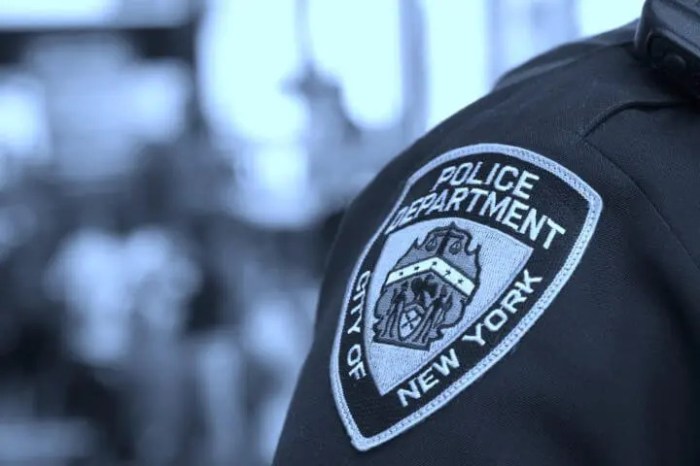The massive $178 million Whitestone Expressway and Bridge reconstruction project, in north Queens, will begin next month, it was announced by the State Department of Transportation (DOT).
The 42-month project will also repair and modify sections of the adjacent giant interchange that directly connects the Whitestone and Van Wyck Expressways, the Grand Central Parkway, as well as the busy Northern and Astoria Boulevards…five crowded arteries carrying well over 500,000 cars and trucks per day.
The huge multi-lane interchange is wrapped tightly around Shea Stadium and the U.S. Tennis Center. Longer than a mile, the spaghetti-shaped transportation link feeds at least four lanes headed for the Whitestone Bridge, Cross Island Parkway, and the JFK and LaGuardia Airports.
The announcement was made at a pre-construction meeting last Friday, hosted by Community Board 7. A DOT report, issued May 2001, had described that the bridges "substandard travel lane width, insufficient weaving distance, and inadequate stopping sight distance contributed to the high accident rate within this section of the highway."
Congressman Joseph Crowley said that he was encouraged that the state DOT had completed the necessary studies and would begin construction.
CB 7 District Manager Marilyn Bitterman, who has fought for the bridge and highway repairs to accommodate rising traffic volumes during the past decade, called it "a project that is long overdue. It will correct unsafe traffic conditions and also meet federal safety guidelines."
The program calls for the rehabilitation and resurfacing of the entire two-mile length of the Whitestone Expressway between the Flushing River and the Cross Island Parkway. New designs will upgrade the expressways traffic safety and congestion relief systems:
New ramps to the Linden Place exit will prevent merging accidents caused by the roadways current design.
Redesign of Linden Pl. will promote safer pedestrian crossing, and a freer flow of traffic.
All entrance and exit ramps, lighting and drainage will be modernized to conform to state and federal safety standards.
New under-highway U-turns at Linden Place and College Point Boulevard will reduce College Point Corporate Park congestion.
Key to the success of the 3-1/2-year construction project is the mandate that four expressway lanes in each direction will be kept open during morning rush hours (6 a.m. to 10 a.m.) and during evening rush hours (3 p.m. to 10 p.m.). Basic work hours will be between 7 a.m. to 3:30 p.m. Some sewer work will be done at night.
While the plans call for the upgrading of all of the expressways access ramps, the DOT has refused to repair the antiquated and unsafe 14th Avenue exit ramp in Malba, claiming that it had been installed by the MTAs Bridge and Tunnel Authority. Malba residents have hired an attorney to compel the MTA to extend the exit ramp from its current 25-foot length to the federally-mandated 100-foot length.
The Whitestone Bridge was built in 1937 to carry four lanes of traffic over the river. It was designed for low speed traffic and only provides a safe stopping distance adequate for 30 mph. Forty years ago the bridges northbound lanes were modified to carry three lanes from Astoria Boulevard and two lanes from the Van Wyck Expressway.
The existing five-lane highway carries a daily traffic volume of 85,000 vehicles on its narrow ten-foot-wide lanes. Two years ago, a state DOT report promoting the project, labeled the bridges lane width and weaving distance as "substandard" to meet current traffic demands.
The DOT will replace and reconfigure the roadway alignments of the northbound Whitestone and Van Wyck Expressways. The new lanes will be built on three replacement bridge structures which will carry 2 lanes of the northbound Whitestone Exp., 2 lanes of the northbound Van Wyck Exp., and a new Linden Pl. exit, thereby eliminating the exit traffic weaving.
The DOT revealed that there is a large homeless population living under the bridge, and that lights were added where the homeless congregated. DOT officials say that although the police have been alerted, care must be taken during bridge demolition proceedings, and during bridge reconstruction.
Contractor for the project is Tully/A.J. Pengo Construction, in Flushing.



































